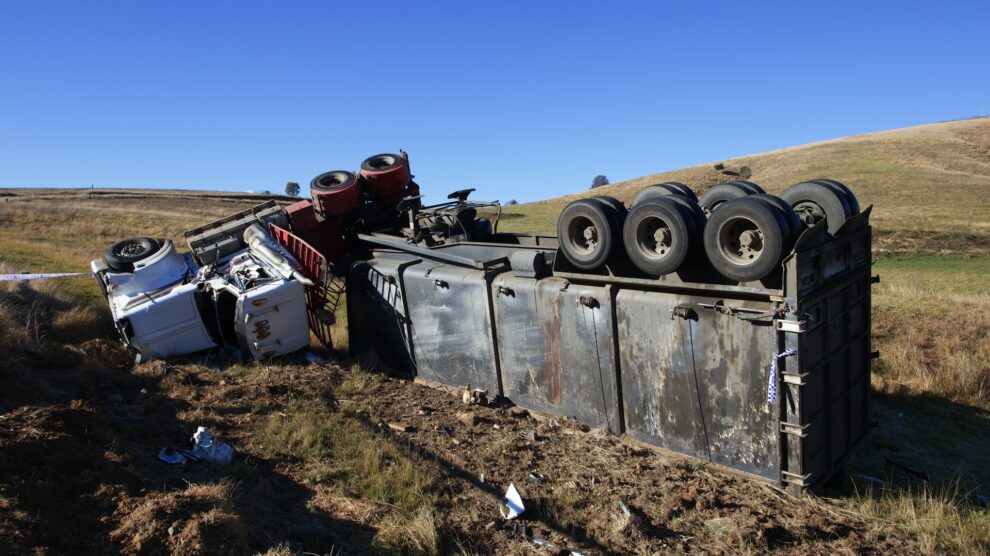The trucking industry, an essential component of the global economy, is grappling with the increasing problem of truck accidents. These crashes result in substantial property destruction and fatalities. In addition, they have far-reaching consequences for the trucking sector, such as increased operational costs, damaged reputations, and heightened regulatory scrutiny.
In this article, we’ll explore the complex issue of rising truck accidents, analyzing their causes, impact on the industry, and potential solutions.
Current Statistics on Truck Accidents
The frequency and severity of truck accidents have become pressing issues for the transportation industry. The National Safety Council (NSC) reported that in 2022, 120,200 large trucks were involved in crashes resulting in injuries. Additionally, 5,837 large trucks were involved in fatal crashes, reflecting a 1.8% increase from 2021. Over the past decade, the number of fatal crashes involving large trucks has risen by 49%.
Although the total number of truck accidents has risen, the rate of accidents per mile traveled has remained relatively stable. This suggests that the growing number of trucks on the road is a contributing factor to the increase in accidents. To develop effective solutions for the industry’s challenges, accurate data is essential.
Is there a correlation between certain times or conditions and the likelihood of truck accidents?
Truck accidents often happen during periods of heavy traffic. In 2022, 47% of fatalities in large truck crashes happened between 6am and 3pm Also, inclement weather, including snow, fog, and rain, often leads to accidents.
In addition, nighttime driving increases risk due to reduced visibility and potential driver fatigue, making awareness and caution essential in these situations.
Causes of Rising Truck Accidents
The increase in truck accidents can be attributed to several critical factors. One major cause is driver fatigue, as long hours on the road lead to diminished alertness.
An IIHS research revealed that truck drivers who operate for over eight hours are twice as likely to be involved in a crash. The long hours of work lead to sleep deprivation, disrupt regular sleep and rest patterns, and contribute to driver fatigue. Therefore, federal hours-of-service regulations permit large truck drivers to operate their vehicles for up to 11 consecutive hours at a time.
Moreover, distracted driving, exacerbated by mobile device use, also plays a significant role in fatal truck accidents. Also, the growing pressure to meet tight delivery schedules often results in speeding and aggressive driving behaviors. In addition, inadequate maintenance of vehicles further increases the risk, with a significant portion of crashes linked to mechanical failures.
How does driver training impact the frequency of truck accidents?
Effective driver training significantly reduces the frequency of truck accidents by equipping drivers with essential skills and knowledge. Effective training improves drivers’ understanding of road safety, vehicle control, and defensive driving strategies. Consequently, well-trained drivers are more equipped to anticipate hazards, respond effectively, and reduce risky behaviors while driving.
Impact on Trucking Companies
The rise in truck accidents has profound implications for trucking companies, affecting their operational efficiency and financial health. Trucking companies reported an increase in insurance premiums due to higher accident rates, significantly straining profit margins. Also, companies often face legal costs and potential settlements, which can further deplete financial resources.
Increased accidents also lead to disruptions in logistics and delivery schedules, impacting customer satisfaction and trust. Truckinfo.net reported that although specific truck accident data is unavailable, the NSC estimates average economic costs by injury severity. The commercial truck accident in the US cost $1,778,000 for fatalities and $155,000 for disabling injuries.
Such calculations underscore the significant financial impact of motor vehicle accidents, including those involving trucks.
Legal Implications and the Role of Lawyers
The rise in truck accidents not only impacts the safety of roads but also brings significant legal implications for those involved. When accidents occur, injured parties often seek compensation. This scenario creates a crucial role for legal professionals, particularly personal injury lawyers, who specialize in navigating the complexities of these cases.
In August 2024, Fox2Now reported a tragic incident in downtown St. Louis. A man was killed by a semi-truck while changing a flat tire on his Chevy HHR. The accident occurred on westbound Interstate 44 near Broadway, with emergency crews responding shortly after 7 p.m. The truck driver stopped a couple of miles down the highway, but the victim was pronounced dead at the scene.
In such accidents, the heirs of the deceased can pursue legal action against the truck driver. They may hire a local St. Louis personal injury lawyer to charge claims against trucking companies or negligent drivers.
In their response, you can also hire a knowledgeable personal injury lawyer to contest the charges. This lawyer can help you negotiate with the claimant and deal with the insurance companies and other regulatory bodies. A personal injury lawyer can effectively address questions of responsibility and fight for your rights.
TorHoerman Law notes that the majority of personal injury cases settle before litigation, making it unlikely that you will need to appear in court. Many disputes are settled through alternative dispute resolution (ADR) processes. If your case does go to court, your attorney will manage most of the legal work, resulting in minimal involvement on your part.
Strategies for Mitigating Truck Accidents
To combat the rising incidence of truck accidents, trucking companies and regulators can implement several effective strategies. One key approach is enhancing driver training programs. A promising approach is the implementation of cutting-edge safety features, including collision prevention systems and lane departure alerts.
Regular vehicle maintenance is also crucial; maintaining optimal vehicle performance can prevent mechanical failures that contribute to accidents. Also, establishing strict schedules and encouraging regular breaks can help combat driver fatigue, a major factor in many truck accidents.
By prioritizing these strategies, the trucking sector can improve safety, reduce accident rates, and ultimately protect drivers and the public.
How can technology improve safety in the trucking industry?
Technology enhances safety in the trucking industry by implementing advanced driver-assistance systems (ADAS), including collision avoidance and lane-keeping assistance. Also, telematics provides real-time monitoring of driver behavior and vehicle performance, enabling proactive measures to enhance safety and reduce accident risks.
Navigating Towards Safer Roads
The increasing frequency of truck accidents presents major challenges for the trucking sector, impacting safety, economic viability, and public perception. As the industry grapples with the consequences of these accidents, it is imperative to adopt comprehensive strategies.
By prioritizing safety and implementing proactive measures, trucking companies can reduce accident rates and protect their drivers and the public. Collaboration among industry stakeholders, regulators, and legal professionals will be essential in fostering a safer transportation environment.





